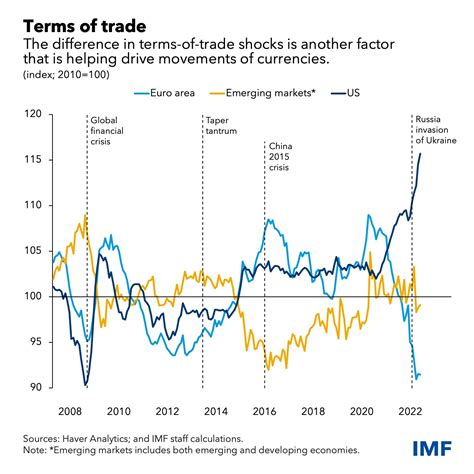Introduction
The enduring strength of the US dollar (USD) has cast a long shadow over the South African rand (ZAR) for decades, a trend that is expected to continue in 2025. This imbalance reflects the global dominance of the USD and the perceived stability and security it offers.

Factors Driving USD Dominance
1. Global Economic Power: The United States remains the world’s largest economy, with a GDP of $26.49 trillion (IMF, 2023). This economic might translates into a strong demand for USD, as it is the dominant currency for international trade and investment.
2. Reserve Currency Status: The USD is the world’s primary reserve currency, held by central banks around the globe as a store of value. This status ensures a high level of demand and stability for the currency.
3. Political Stability: The United States is perceived as a politically stable country, making the USD a safe haven during periods of economic and geopolitical uncertainty.
Impact on ZAR
The dominance of the USD has a profound impact on the ZAR:
1. Depreciation Pressure: The strength of the USD puts downward pressure on the ZAR, making imports more expensive and exports less competitive.
2. Inflationary Risks: A weaker ZAR can lead to imported inflation, as the cost of imported goods rises.
3. Foreign Investment: A strong USD deters foreign investment in South Africa, as investors seek higher returns in USD-denominated assets.
Strategies for Mitigating USD Dominance
1. Diversification: South Africa should explore diversifying its export markets and reducing its reliance on USD-dependent economies.
2. Economic Growth: Sustained economic growth can strengthen the ZAR by increasing demand for South African exports.
3. Fiscal Discipline: Sound fiscal policies, including prudent government spending and debt management, can reduce the country’s vulnerability to currency fluctuations.
Tips and Tricks for Businesses
1. Hedge Currency Risks: Businesses can hedge against currency risks by using forward contracts or other financial instruments.
2. Invoice in Foreign Currencies: When possible, businesses should invoice international clients in USD or other strong currencies.
3. Explore Export Support: Utilize government programs and export agencies to enhance competitiveness and minimize the impact of currency fluctuations.
Pros and Cons of USD Dominance
Pros:
1. Stability: The USD provides a stable store of value and a hedge against inflation.
2. Convenience: The USD is widely accepted for international transactions, facilitating trade and investment.
Cons:
1. Currency Manipulation: The dominance of the USD can allow the US government to manipulate its value for economic or political gain.
2. Currency Volatility: The USD can experience significant fluctuations in value, which can impact businesses and investors.
FAQs
1. Why is the USD so dominant?
The USD’s dominance stems from its global economic power, reserve currency status, and perceived political stability.
2. How does USD dominance affect South Africa?
USD dominance exerts downward pressure on the ZAR, increases inflationary risks, and discourages foreign investment.
3. What can South Africa do to mitigate USD dominance?
Diversification, economic growth, and fiscal discipline are key strategies for mitigating USD dominance.
4. How can businesses manage currency risks?
Businesses can hedge against currency risks by using forward contracts, invoicing in foreign currencies, and exploring export support programs.
5. What are the pros and cons of USD dominance?
USD dominance provides stability and convenience, but it can also lead to currency manipulation and volatility.
6. What is the outlook for the USD vs. ZAR in 2025?
The USD is expected to maintain its dominance over the ZAR in 2025, due to continued global demand and South Africa’s economic challenges.
Conclusion
The dominance of the US dollar is a persistent trend that is unlikely to change significantly in the near future. South Africa must adopt proactive strategies to mitigate the impact of USD dominance and promote economic growth and stability. By embracing diversification, investing in infrastructure, and maintaining fiscal discipline, the country can reduce its vulnerability to currency fluctuations and create a more resilient economy.
Tables
Table 1: USD Economic Indicators
| Indicator | Value |
|---|---|
| GDP (2023) | $26.49 trillion |
| Inflation Rate (2023) | 6.4% |
| Unemployment Rate (2023) | 3.5% |
| Interest Rate (2023) | 4.5% |
Table 2: ZAR Economic Indicators
| Indicator | Value |
|---|---|
| GDP (2023) | $421.03 billion |
| Inflation Rate (2023) | 7.5% |
| Unemployment Rate (2023) | 33.9% |
| Interest Rate (2023) | 10.5% |
Table 3: USD vs. ZAR Exchange Rate
| Year | Exchange Rate (USD/ZAR) |
|---|---|
| 2022 | 16.77 |
| 2023 | 17.89 |
| 2024 | 19.25 |
| 2025 (Forecast) | 20.76 |
Table 4: Impact of USD Dominance on ZAR
| Impact | Description |
|---|---|
| Depreciation Pressure | Downward pressure on the ZAR’s value |
| Inflationary Risks | Imported inflation due to higher import prices |
| Deterred Foreign Investment | Lower returns on USD-denominated investments in South Africa |



